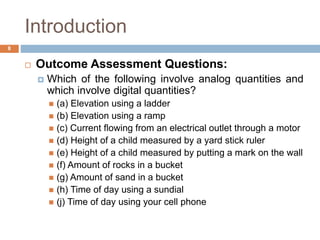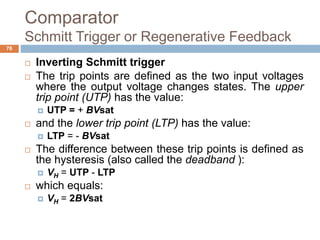The document provides an introduction to analog and digital electronics. It discusses:
1) The prerequisites for the course including basic electrical engineering, C programming, and basic electronics.
2) The differences between analog and digital representations, with analog being continuous and digital being discrete.
3) Some key aspects of digital electronics including binary numbers, parallel vs serial transmission, memory, and the major parts of a digital computer like input, output, memory, arithmetic/logic, and control units.
4) An overview of semiconductor devices like photodiodes, light emitting diodes (LEDs), and photocouplers along with their basic construction, working principles, and applications.
5) Different biasing
















































































































































